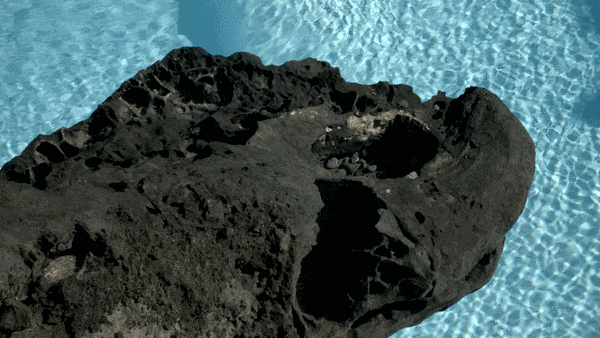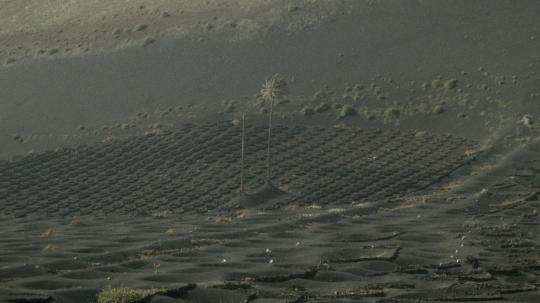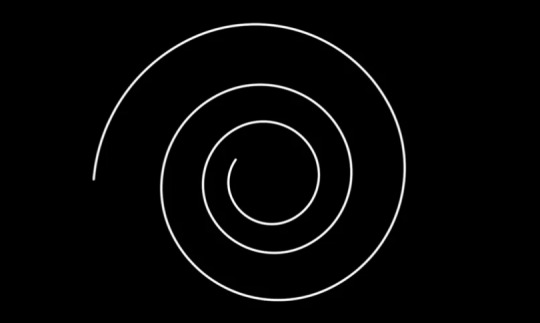#gftexts
Text
The System of Stability (2016)
Sasha Litvintseva in collaboration with Isabel Mallet
Film / 17 min / 2016
Trailers: https://www.youtube.com/watch?v=URodDlzjM1Q&t=3s & https://vimeo.com/168080539
By Amy Gowen

The System of Stability by Sasha Litvintseva, 2016
Artist, researcher, and curator Sasha Litvintseva’s uses film, lecture and text to explore the theory of geological filmmaking. Such filmmaking contemplates the uncertain thresholds of human/nonhuman, inside/outside and visible/invisible through the intersections of media, ecology, history and science, in an attempt to challenge typical human-centric narratives. Through its geological filmmaking form of “experimentation, imaginative invention, and radical thinking,”[1] The System of Stability initiates creative, perceptual and philosophical shifts in cognition that offer new ways of comprehending ourselves and our relation to the world.
Sasha’s project of Geological Filmmaking includes a larger body of works that each focus on the relationship between humans, non-humans and their direct environments. Through this she engages with the limits of current Anthropocentric narratives by entangling human voice and agency with other geological matter including the likes of volcanic rock faces, desert sinkholes and molecules of poisonous Asbestos in the atmosphere, with a view of engaging with the in/visible power structures at play between humans and non-humans.

The System of Stability by Sasha Litvintseva, 2016
The System of Stability in particular acts as an encounter with the landscape on its own terms, where the inorganic takes the narrative lead, commanding the attention of the viewer. The film is divided into three parts, the opening animation and voiceover is of a mathematical point, a single white dot against a black background. The point narrates itself through a monologue that describes its transition from nothingness to existence, inviting its audience to contemplate the lives of matter we typically assume to have little or no agency. The middle section builds on this notion and is composed of mostly static frames of the rocky terrain of the volcanic island of Lanzarote, accompanied by an intrusive and jarring score that reflects the power and omnipresence of the landscapes on screen. Finally a closing scene of the landscape in motion is accompanied by a new narrator, one that is positioned clearly from a human perspective - we see the landscape from a moving car as the camera “blinks” to mimic human sight. The landscape moves by at increasing speed as the human narration begins to contribute to the loss of subjectivity that the film evokes. After having lived on Earth for millions if not billions of years, the rocks we see on screen help narrate quite different stories about the world than the ones told by human beings, making it clear that it is not the human who exerts the dominant voice within this film, cuing us to consider that the living planet is not only for us.
Litvintseva takes inspiration from critic and filmmaker Jean Epstein who wrote in 1923 that “if we wish to understand how an animal, a plant or a stone can inspire respect, fear and horror - those three most sacred sentiments - I think we must watch them on the screen, living their mysterious, silent lives, alien to the human sensibility.”[2] In The System of Stability the camera eye is in essence non-human, unburdened by the knowledge and meaning of the objects it captures, therefore granting it the ability to represent other nonhuman agencies. Sasha states that through her geological filmmaking she is “trying to visually disrupt the hierarchies governing relations between subject and object, nature and culture – the dichotomies inherited from modernity that have not served us well.”[3] From this her theory of filmmaking can be understood as a visual strategy for the Anthropocene in order to think and feel on geologic scales and time frames that incorporate the other-than-human as much as the human, in doing so The Stability of the System probes into the vibrancy of matter and the creative agency of nonliving things.

The System of Stability by Sasha Litvintseva, 2016
This is a key work within Planetary Awareness for Earthlings in a Post-global Age as Sasha Litvintseva successfully challenges our current unconscious dependence upon globalist, anthropocentric perspectives and frameworks. Described as depicting a “quiet catastrophe,”[4] the film attempts to test preconceived attitudes through the (re)thinking of ideas such as natureculture, non-human agency and deep time to encourage an increased planetary vision of a world which portrays multiple perspectives, as well as illustrating an alternative frameworks that can acknowledge the ecosystem of the living planet. Through such a narrative reframing, we witness the entanglement of human and non-human agencies to produce a more nuanced, emphatic and layered perspective, aiding in our aim to (re)member, (re)shape and (re)join our relationship with the living planet. Moving away from the human-centric and towards the Planetary perspective.
References:
[1] "Sasha Litvintseva Texts." Sasha Litvintseva. Accessed December 21, 2018. https://www.sashalitvintseva.com/gftext.
[2] Transformations Journal – Transformations Journal of Media, Culture & Technology. Accessed December 21, 2018. http://www.transformationsjournal.org/wp-content/uploads/2017/11/Trans30_03_mulvogue.pdf.
[3] "Visual Strategy for the Anthropocene." INRUSSIA. Accessed December 21, 2018. http://inrussia.com/visual-strategy-for-the-anthropocene.
[4] Transformations Journal – Transformations Journal of Media, Culture & Technology. Accessed December 21, 2018. http://www.transformationsjournal.org/wp-content/uploads/2017/11/Trans30_03_mulvogue.pdf.
Bibliography & Further Reading:
-Transformations Issue 32 (2018), Geological Filmmaking: Seeing Geology Through Film and Film Through Geology, pp.107-124
-Transformations Issue 30 (2018), Catastrophe Aesthetics: the moving image and the mattering of the world, pp.40-55
-“Visual Strategy for the Anthropocene.” INRUSSIA. Accessed January 20, 2019. http://inrussia.com/visual-strategy-for-the-anthropocene.
- Screen and Audiovisual Research Unit. Accessed January 20, 2019 https://culturetechnologypolitics.files.wordpress.com/2018/03/sonic-acts-essay-compressed.pdf
0 notes
